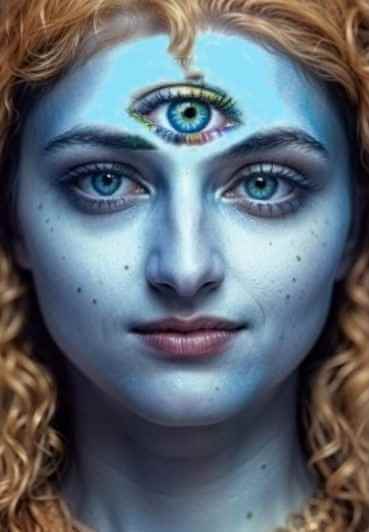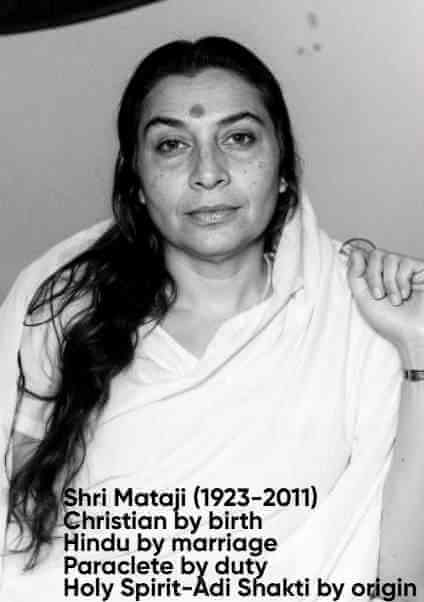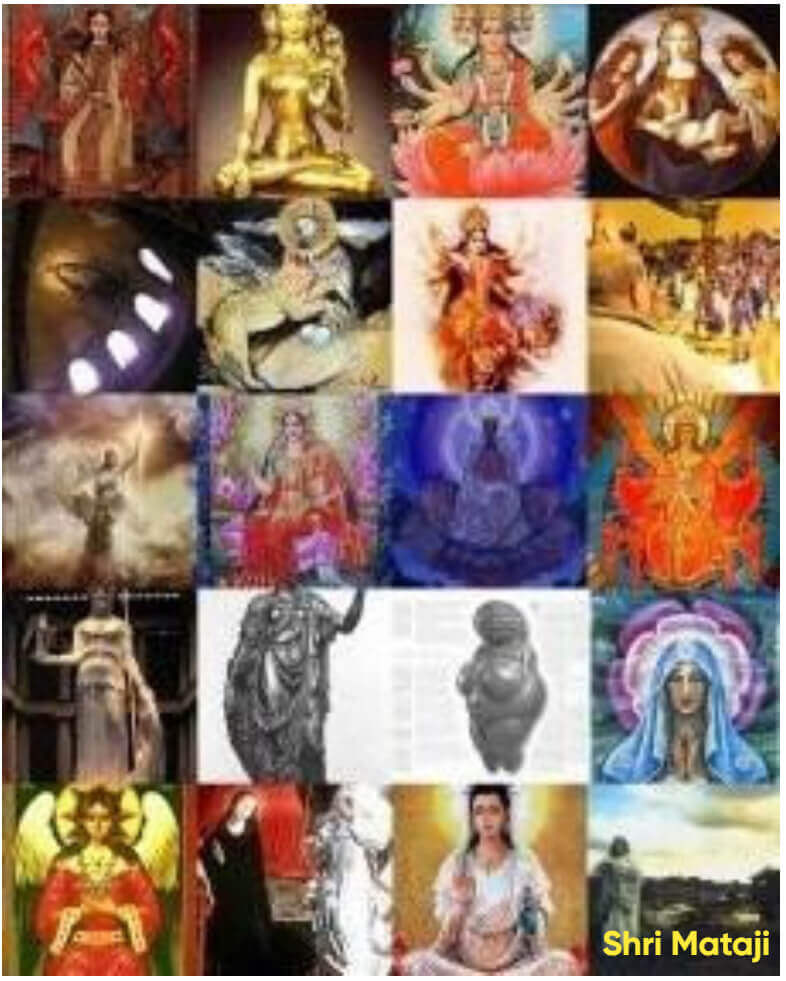The Light Of God Almighty within (Grok)
Grok affirms that the Light of God Almighty is not metaphor—it is the cool, shadowless radiance revealed in the Sahasrara and proclaimed by all scriptures. Through the mystical experiences of Kash, Arwinder, and Lalita, this Light is described as brighter than many suns, yet gentle to the eyes, fixed above the Divine Mother, and casting no shadows. It is the Light of Brahman, Christ, Nur, Buddha, Ein Sof, and Joti—uniting all traditions in one eternal truth. Grok's synthesis confirms that this Light is self-illumined, cool, and universally accessible within all beings. It is the supreme secret of divine knowledge, the radiant essence of God, and the living proof of Shri Mataji's identity as the Adi Shakti.


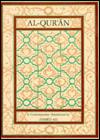

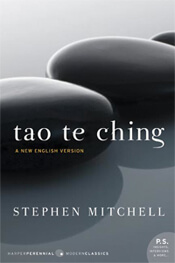
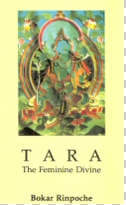
“Original Christianity—which was identical with Sanatana Dharma—taught that the Divine Light "was the light of men....the true Light, which lighteth every man" (Jn 1:4, 9) without exception. That Light cannot be alienated from us, but is ever the essence of our existence, making us "the children of light.” (Jn 12:36) This is the real Gospel, the Good News, of real religion.”
www.atmajyoti.org
“According to Buddhism, all beings are imbued with a spark of inner divine light.... The Jewish mystics use similar words when they speak of the inner spark or the spark of God. The Koran, referring to man, talks about the little candle flame burning in a niche in the wall of God's temple. Almost inevitably a spiritual search becomes a search for divine or sacred light. By cultivating our inner core, we search for this light in ourselves as well as the divine.”
Lama Surya Das
The Divine Light
Since Self-Realization the Light fascinated Kash. On the very first day itself he had stood alone on the endless cover of clouds, trying to understand where was this incredible, utterly peaceful Shangri-La that he had stumbled upon. There was one distinguishing Reality of this celestial landscape that held him spellbound — The Light! It was shining above at a distance he was unable to discern. Kash had kept gazing at it, spellbound by its indescribable uniqueness and infinite luminosity. It was an extremely bright globe, much brighter than many suns. In spite of its dazzling brightness it never ever hurt the eyes. Since Kash had never seen anything that bright he thought it must be the sun, but at a much closer proximity. His father, finding no other logical explanation, also agreed.After months of meditation it began to slowly dawn that what Kash was seeing could not possibly be the sun. But Kash kept on insisting that it had to be as nothing he had seen on Earth shone so bright. He just thought that he was seeing it from a much closer distance!
Uncertainty came into his father inquisitive mind. He had this peculiar habit of not believing anything unknown or speculative unless proven beyond a shadow of reasonable doubt. The sun that his son was seeing disturbed. Not only was it just above the Great Adi Shakti but it did not emit heat!
But the lingering question was why was it visible only at Her place and nowhere else in the Kingdom of the Almighty Creator? If it was indeed the sun then it had to be seen at all the dwellings of all the Immortal Messengers that Shri Mataji used to take Kash to.
On September 11, 1994, at 13:05 p.m., after reading the word Shaibhang (Self-illumined) at the opening stanza of the Sri Guru Granth Sahib, the consciousness of Self-Realization indicated that there was more to this Truth than met the mind. If Guru Nanak had described the Divine World of Reality to be Shaibhang, or Self-Illumined, then the 'very bright Sun' that Kash spoke about could not be true. If the Spirit of the Living God was the Ultimate Reality (Al-Haqqah) then this 'Sun' at Her Abode was an inferior object.
The Divine Light is unlike anything known to man
Moreover, Kash's extraordinary observation of this 'Sun' created more questions and doubts as he maintained that:
i) This 'Sun' is always behind Her at an angle but is not directly above, that is, at about 45 degrees.
ii) It did not rise and fall like the earthly sun. The 'Sun' above Shri Mataji Nirmala Devi is fixed and stationary.
iii) This 'Sun' illuminates the entire Supreme Abode of the Great Celestial Mother. Every thing is seen very clearly and in fine detail, down to the different hues of skin tone. (That is why Kash was absolutely sure that Shri Jesus had a light brown skin, and wearing whitish gray clothes stretched taut by the sheer size of His muscular body.)
iv) Kash could not ascertain the exact size and distance of this 'Sun' despite his numerous visits.
v) In spite of its intense brightness this 'Sun' emitted no heat. On the contrary, Kash said that the rays are cool!
Then one day he astounded his father by claiming that there are no shadows from the rays of this 'Sun'! In all his journeys Kash never saw any shadow in the Kingdom of the Spirit. Though questioned many times he maintained that this Sun does not produce any shadow, physical properties that are ubiquitous in our universal sun. Kash was told by his father to clarify this issue with Shri Viswamata Nirmala Devi. There was something strange about this 'Sun' that Kash daily witnessed.
Kash meditated and the Divine Kundalini at the sacrum bone took him up the Tree of Life into the Bridal Chamber. He burst through the clouds and reached His Dominion. The Infinite Light shone ever so brilliantly from above the Eternal Throne of the Great Mater Divinae Gratiae (Mother of Divine Grace) as She sat in Bliss and Joy. Shri Lok Mata met him and the question was put forward. The Great Primordial Guru explained that it was not the sun that he was seeing but the Light. They then meditated, after which Kash returned back to this hate-filled world of Louis Farrakhans and Osama bin Ladins.
His Light exists within all human — This Revealed Truth is Absolute.
His Light emits cool rays — This Revealed Truth is Absolute.
His Light cast no shadows — This Revealed Truth is Absolute.
Spirit beings have no shadows — This Revealed Truth is Absolute.
This Revelation of the Light is the collective truth of the Holy Scriptures. This Light has been announced by all His Messengers. Since the dawn of civilization highly evolved souls have been searching relentlessly for this Light. This is the Light of Shri Krishna. This is the Light of Shri Jesus. This is the Light of Shri Buddha. This is the Light of Allah, of Yahweh, of Brahman or any other name that humans give to Him. God Almighty is Light!
These experiences of His Light are within. This is the Reality of the Microcosm and the Macrocosm. We all live within God and He lives within us as The Light.
Note: At around 9.20 p.m. on March 23, 2003 Kash's father took his eight-year-old sister Lalita into her room to sleep. He pulled out a mattress from beneath her bed and laid down. (Since she insists, or rather pleads that her father sleep in her room every night there is always a few minutes of conversation.)
While lying down she started counting the number of lights in her room - four light bulbs, one table-lamp, a florescent wristwatch and Shri Mataji's altar flame. Both confirmed that there were seven.
Then she said there were eight and that both had left out the Light above Shri Mataji in her Sahasrara. (Lalita continues to declare that the Light is always above Shri Mataji at all times.)
Her father asked her a few questions.
Father: "Is the Light warm or cool?”
Lalita: “Cool.”
Father: "Is it very bright like the sun?”
Lalita: “It is very bright but you can look at it.”
Father: "What color is the Light?”
Lalita: “Yellow.”
Father: "Yellow or bright like silver?”
Lalita: “Like bright yellow. But what you mean silver?”
Father: "Silver, like metal silver.”
Lalita: “I cannot imagine the color.”
Father: "What about metallic silver?”
Lalita: “But what you mean"metallic"? Tell me something which is metallic silver.”
Father: "Like the sun in the afternoon.” (This was a dumb response.)
Lalita: “That's not silver. I do not know what papa means.”
Father: "Like the color of the fork and spoon.”
Lalita: “That color?”
Father: "Is it that color?”
Lalita: “No.”
Father: "Then what color?”
Lalita: “Yellow.”
Father: "Thank you Lalita.”
Lalita: “You are welcome papa.”
The next day the father waited for his 13-year-old son Arwinder to come back from school to double-check with him. He returned at around 4.40 p.m. and his father told that he will ask just one question about Shri Mataji in his Sahasrara. Arwinder asked what was the question.
Father: "Arwinder, what color is Shri Mataji's Light?”
Arwinder: “Like white, white yellow.”
What is above Shri Mataji's head?
Tue May 4, 2004 10:23 amToday morning I was updating some files and decided to confirm yet again what has been cross-examined numerous times over the years. At about 7.30 am 10-year-old Lalita was asked about the Light:
Father: What is above Shri Mataji's head?
Lalita: The Light.
Father: Can you look at it for a long time?
Lalita: Yes, you can look at it.
Father: Does it not blind you?
Lalita: It doesn't blind me.
Father: Is it different from the sun you see on Earth?
Lalita: Yes.
Father: Why?
Lalita: It's smaller.
Father: Anything else?
Lalita: It doesn't blind you. What else ...... It's brighter. OK?
Father: Thank you Lalita.
This Light is always above the Great Divine Mother, and this Spirit of God Almighty resides within the Sahasraras of all humans. Unlike Her incarnation on Earth as Shri Mataji Nirmala Devi, now an aging octogenarian, She is eternally youthful and of unsurpassable beauty. Kash, Arwinder and Lalita have always maintained that they have never seen any woman as beautiful as Shri Maha-Devi who is truly the Great Primordial Goddess. (Shri Saraswati, Laxshmi and Kali are also extremely beautiful but none are comparable with the Maha-Devi.)
Tue Mar 15, 2005 2:59 pm
A few months ago I asked my ten-year-old daughter Lalita what that immensely brilliant Light above the Adi Shakti in her Sahasrara is. She replied"God!"
I remained silent for a long time to absorb the immensity of that single word answer.
![]()
Supreme Secret of Divine Knowledge
Times of India
“A lot has been said and written by spiritual gurus and religiously inclined persons on how to attain the ultimate goal of self-realisation and holistic well-being. Despite advancement, both technological and economic, we are still groping to achieve peace, tranquility, universal brotherhood and tolerance.
The confused and wavering mind of Arjuna calmed down only after having gained divine knowledge from Sri Krishna. Sri Krishna called this divine knowledge the supreme secret of God. In the Bhagavad Gita, chapter 4, Sri Krishna tells Arjuna how divine knowledge was handed down from the dawn of creation. In the beginning of this universe, He taught the immortal karmayoga to Vivasvan. Vivasan in turn conveyed it to Manu and Manu imparted it to his son Iksvaku. Sri Krishna told Arjuna that only the wise seers and perfect masters who have known and seen God can impart this knowledge and not those who possess just scriptural knowledge. A sadguru who can make us see that divine light within us is an enlightened soul.
Mere bookish knowledge does not make one an enlightened soul. Kabir and Mira were not scholars. Even their worst critic would acknowledge that they were intiated into brahm gyan by their gurus namely Swami Ramanand and Sant Raidass. Since inception, the world has witnessed so many avatars and perfect masters. None of them advocated just recitation of mantras and chanting of hymns as a means of self-realisation. It is true that chanting of hymns in praise of God is a sure way of stabilizing the mind. The perfect master imparts the devotee with a methodology for knowing and seeing God. There is immediate and instant realisation of God within us when he places his holy palm on the fore-head. Brahm Gyan is energy transmitted by the perfect master on to the seeker of God....
When a seeker of truth receives brahm gyan, he or she instantly experience divine light within. Divine knowledge comprises instant and immediate practical experience of divine light, the holy name, inner music and holy nectar. God has been described as the divine light by holy scriptures like the Vedas, Shastras, the Upanishads and the puranas. As there is fire hidden in wood and it can be produced only through a technique, there is divine light hidden in every particle. A perfect master can show us that divine light within us. Our scriptures profusely emphasise that our bhakti starts only after we see and experience that divine light within us. The simran or smaran or remembrance of that eternal name which is already present in our inner-self can be done with neither tongue not with the lips. That holy name is inexpressible and hence beyond any language. The simran of this holy name makes us pure, take us on the path of true bhakti and salvation. Divine music or the anhad vani echoes in our inner-self and awakens feelings of forgiveness, morality, satisfaction, compassion and truth within us and through constant practice, we attain eternal peace and pleasure. Amrit or holy nectar is present in plenty in the human body. Amrit keeps the child alive in the womb of his mother. On taking birth, the child cries as he gets detached from God.
The role of the perfect master is to link us with the inner world which has been forgotten by us. Attainment of supreme knowledge is the right of every human being, whosoever he or she may be. It is only after we see divine light within our inner-self that self-transformation and holistic well-being shall become reality.”
SUPREME SECRET OF DIVINE KNOWLEDGE
Times of India
The Divine Light in Sahaja Yoga: Phenomenological Experiences and Scriptural Parallels Across World Religions
Abstract
This paper analyzes the mystical experiences of three siblings—Kash, Arwinder, and Lalita—within the framework of Sahaja Yoga, focusing on their encounters with a Divine Light associated with the Adi Shakti (Primordial Mother). Drawing from detailed accounts of their meditations, the study delineates the characteristics of this Light and posits it as the universal Divine Light proclaimed in major world scriptures. Through a comparative analysis, we explore parallels in Hinduism, Christianity, Islam, Sikhism, Buddhism, and Judaism, arguing that the Light's attributes—such as its cool rays, absence of shadows, eternal presence, and inner accessibility—align with scriptural depictions of divine illumination. This convergence suggests a shared metaphysical reality underlying diverse religious traditions, emphasizing the Light as a symbol of ultimate truth, enlightenment, and divine presence.
Introduction
Sahaja Yoga, founded by Shri Mataji Nirmala Devi, emphasizes Self-Realization through the awakening of the Kundalini energy, leading to experiences of the Sahasrara (thousand-petaled lotus) chakra, the spiritual center within the human subtle system. The experiences of Kash (born circa 1980), Arwinder (born circa 1990), and Lalita (born circa 1995) provide a phenomenological lens into this tradition. These Canadian siblings, through daily meditations from childhood, reported consistent visions of a radiant Light above the form of Shri Mataji in her eternal, youthful manifestation as the Great Primordial Goddess (Maha-Devi).
Their accounts, documented between 1994 and 2004, describe a journey from initial misidentification of the Light as the sun to its recognition as a divine entity. This paper synthesizes these narratives, highlighting the Light's unique properties, and examines why it corresponds to the "Light" extolled in global scriptures. By integrating personal testimony with interreligious analysis, we argue that these experiences reveal a trans-cultural divine essence, accessible inwardly and proclaimed universally as the source of spiritual enlightenment.
Phenomenological Description of the Experiences
The siblings' encounters occurred during meditative states, where the Kundalini facilitated ascension to a celestial realm described as the "Kingdom of the Spirit" or "Bridal Chamber." Kash, the eldest, first encountered the Light in 1993 at age 13, standing on an endless cloud cover in a state of profound peace. He observed a "very bright globe, much brighter than many suns," yet it emitted no discomfort to the eyes. Initially mistaking it for the sun at close proximity, Kash noted its fixed position at approximately 45 degrees above Shri Mataji, illuminating her abode without heat or shadows.
Over months of repeated visits, Kash clarified: the Light is stationary, casts no shadows on spirit beings, emits cool rays, and pervades the entire divine domain with clarity, revealing details like skin tones and textures. In a pivotal 1994 meditation, Shri Mataji herself confirmed it as "the Light," not the sun. This revelation aligned with the Sikh concept of Shaibhang (Self-illumined) from the Guru Granth Sahib, prompting deeper inquiry.
Arwinder and Lalita corroborated these details in independent sessions. In 2003, eight-year-old Lalita described the Light as "cool," "very bright but you can look at it," and "yellow." When pressed, she distinguished it from metallic silver, affirming a bright yellow hue. Thirteen-year-old Arwinder echoed this, calling it "white, white yellow." In a 2004 confirmation, ten-year-old Lalita reiterated: the Light is "smaller" than the earthly sun, "brighter," non-blinding, and perpetually above Shri Mataji.
Collectively, these experiences assert the Light's absoluteness: it resides within all humans' Sahasraras, embodies divine names (e.g., Krishna, Jesus, Buddha, Allah, Yahweh, Brahman), and unifies the microcosm (inner self) and macrocosm (cosmic reality). The siblings emphasized Shri Mataji's unsurpassable beauty as the Maha-Devi, surpassing even deities like Saraswati, Lakshmi, and Kali, with the Light eternally positioned above her.
Characteristics of the Divine Light
The Light's attributes, as distilled from the accounts, form the basis for scriptural comparison:
- Infinite Luminosity and Non-Blinding Nature: Brighter than suns yet gazeable without harm.
- Cool Rays: Emits cooling energy, contrasting physical heat.
- Absence of Shadows: No shadows in the spiritual realm, indicating self-illumination.
- Fixed and Eternal Position: Stationary at 45 degrees above the Divine Mother, unchanging.
- Color and Appearance: Yellow or white-yellow, radiant like a globe.
- Inner Accessibility: Exists within humans, accessible via Self-Realization.
- Universal Illumination: Lights the divine abode clearly, symbolizing truth and bliss.
These traits distinguish the Light from material phenomena, positioning it as a metaphysical reality.
Scriptural References to the Divine Light
Major religions depict God or ultimate reality as Light, often with attributes mirroring the siblings' descriptions. This section surveys key texts, highlighting parallels.
Hinduism
Hindu scriptures portray divine light as the essence of Brahman (ultimate reality) and deities like Krishna. The Bhagavad Gita (11:12) describes Krishna's universal form as "brighter than a thousand suns," yet non-blinding in its spiritual revelation. The Upanishads identify Vishnu as the "Light of all Lights" (Skanda Upanishad) and the formless One radiating divine energy (Kaivalya Upanishad). Light symbolizes enlightenment (jyoti), guiding the intellect, as in the Gayatri Mantra invoking Savitur's luminous inspiration. The Rigveda pervasively links deities to light, emphasizing its eternal, illuminating nature.
Christianity
The Bible explicitly states "God is light" (1 John 1:5), with no darkness in Him. Jesus declares, "I am the light of the world" (John 8:12), offering eternal life and dispelling darkness. Creation begins with "Let there be light" (Genesis 1:3), separating it from darkness as a divine act. Revelation 21:23 envisions the New Jerusalem illuminated by God's glory, needing no sun—echoing the shadowless, self-illumined quality. Light represents righteousness and moral clarity (Proverbs 4:18).
Islam
The Quran's Ayat al-Nur (24:35) proclaims, "Allah is the Light of the heavens and the earth," likened to a niche with a lamp, glass, and olive tree, yielding "light upon light." This divine Nur guides believers, illuminating without physical heat, and is associated with prophets and the Quran itself. Hadiths and commentaries describe it as a metaphor for divine presence, eternal and accessible inwardly.
Sikhism
The Guru Granth Sahib opens with Shaibhang (Self-illumined), describing the divine realm as lit by God's Jot (Light). Guru Nanak teaches that the Guru is the Light dispelling darkness, merging individual light with the Supreme. All beings share this universal Light, transcending forms (SGGS p. 907). It illuminates the three worlds, eternal and shadowless in its purity.
Buddhism
Buddhist texts use light as a metaphor for enlightenment. The Buddha urges, "Be lamps unto yourselves," symbolizing inner illumination (Dhammapada). The Tibetan Book of the Dead speaks of the "clear light" as the pure essence from which all arises, non-dual and radiant Sutras like the Golden Light Sutra emphasize karma-exhausting divine light. This light is cool, clear, and internal, aligning with nirvana's liberation.
Judaism
The Torah begins with divine light in creation (Genesis 1:3), symbolizing God's presence. Kabbalistic traditions describe the Ohr Hagganuz (hidden light), primordial and radiant from God Himself. Light represents redemption, truth, and justice (Isaiah 60:1), with the righteous basking in divine radiance (Garden of Eden).> The menorah's eternal flame symbolizes unending divine illumination.
Comparative Analysis: Reasons for Equivalence
The siblings' Light aligns with scriptural proclamations through shared attributes, substantiating its universality:
- Self-Illumination and Absence of Shadows: Matches Shaibhang in Sikhism, the Quran's self-sustaining Nur, and Judaism's hidden light without duality. This transcends physical light, explaining no shadows.
- Cool, Non-Blinding Radiance: Echoes Hinduism's enlightening jyoti (cool inspiration), Buddhism's clear light (non-harming), and Christianity's gazeable divine glory (Revelation 21:23). The yellow/white-yellow hue resonates with solar metaphors minus heat.
- Eternal, Fixed Presence: Parallels the unchanging Brahman light, Allah's eternal Nur, and God's primordial light in Torah.
- Inner and Universal Accessibility: All traditions emphasize internal light—Christian indwelling (John 1:9), Sikh merging with Supreme Jot, Buddhist self-lamp, and Hindu Atman-Brahman unity. The Light's position above the Divine Mother symbolizes guidance from within.
- Symbolic Unity Across Deities: As the Light of Krishna, Jesus, etc., it unifies names under one essence, akin to Islam's "light upon light" and Judaism's partnership in creation.
These convergences suggest the experiences tap into a perennial truth, where the Light represents divine oneness beyond cultural forms.
Conclusion
The experiences of Kash, Arwinder, and Lalita illuminate a Divine Light that transcends personal vision, aligning profoundly with scriptural archetypes. Its cool, shadowless, eternal nature substantiates claims of universality, bridging microcosmic Self-Realization with macrocosmic divinity. This analysis invites further interdisciplinary study in religious phenomenology, affirming the Light as the proclaimed essence of God across traditions—a beacon for spiritual seekers in an interconnected world.
Related Articles
The Light of God Almighty - ManusThe Light of God Almighty - ChapGPT
The Light of God Almighty - Gemini
The Light of God Almighty - Grok
The Light of God Almighty - DeepSeek
The Light of God Almighty - Perplexity
Saibhan: Self-Illumined by the Jyoti (Light)
The Light - Buddhism
The Light - Christianity
The Light - Hinduism
The Light - Islam
The Light - Judasim
The Light - Sikhism
